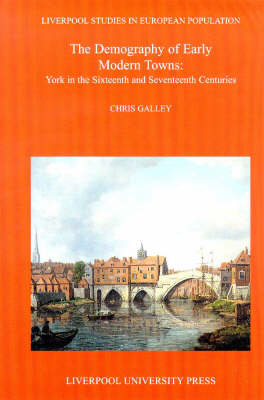Liverpool Studies in European Population
1 primary work
Book 6
Presenting a study of the demographic regime in towns and cities in England and elsewhere in Europe in the early-modern period (circa 1540 to circa 1700), this work examines academic debates about why urban demography appears to be radically different from that of rural areas. Much of the book's focus is on three sets of issues, the first of which concerns the relative paucity of information available about urban demography. This issue is addressed by means of a detailed case study of York, England's "second city" at that time, explaining how and why the individual components of the demographic regime changed, and how York's demography influenced and was influenced by its economy and society. The second set of issues relates to the debate about the nature of urban demography, and the results from York are therefore considered in a wider context: comparable material from other English and European cities is introduced as appropriate and, as a means of resolving some of the current debates, a generalized model describing the mechanisms of urban demography is proposed.
Following the discussion of the dynamics of change within urban demographic regimes, a third set of wider issues is addressed, relating to the impact of urbanization on national demographic regimes and to longer-term demographic changes. While much of the analysis involves the calculation and interpretation of aggregate measures, the experience recounted of individual families provides witness to the social conditions endured by those who lived in the cities of early-modern Europe. In his conclusion, the author discusses the importance of urban demography to national population histories, offers a wider context for his case study, and seeks to set an agenda for future research.
Following the discussion of the dynamics of change within urban demographic regimes, a third set of wider issues is addressed, relating to the impact of urbanization on national demographic regimes and to longer-term demographic changes. While much of the analysis involves the calculation and interpretation of aggregate measures, the experience recounted of individual families provides witness to the social conditions endured by those who lived in the cities of early-modern Europe. In his conclusion, the author discusses the importance of urban demography to national population histories, offers a wider context for his case study, and seeks to set an agenda for future research.
